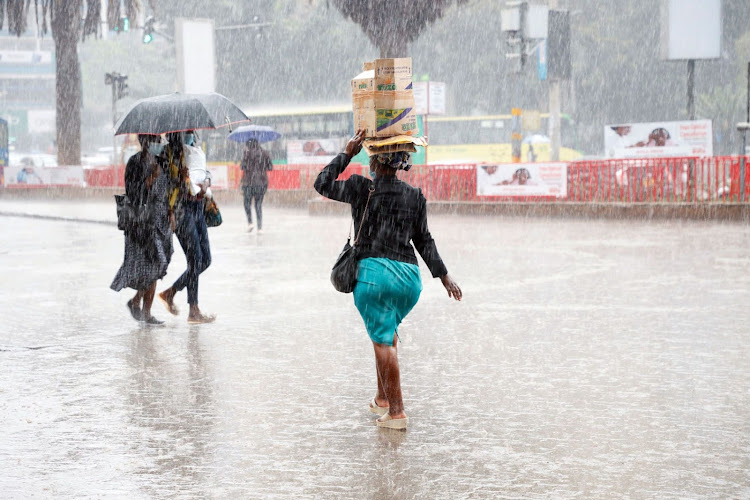The Metrological department has issued a heavy rains alert saying intensity will surpass 20mm in the next 24 hours.
In a public notice Monday evening, director of Kenya Meteorological Department David Gikungu said areas to be affected lie within the South Rift Valley, Lake Victoria, Highlands West and Central Highlands.
These are Narok, Nakuru, Bomet, Kericho, Kisii, Nyamira, Migori, Homa Bay, Siaya, Kisumu, Nandi, Vihiga, Kakamega and Busia.
Bungoma, Trans Nzoia, West Pokot, Turkana, Marsabit, Uasin Gishu, Kiambu, Nyeri, Murang’a, Nairobi, Machakos, Kajiado and Taita Taveta.
Gikungu said the heavy rains are expected starting Monday, February 26.
“The heavy rainfall is likely to spread to Southeast lowlands on Tuesday and Wednesday. It is likely to reduce in intensity on Thursday.”
The forecast indicated that the rains will be accompanied with winds of speeds exceeding 10 meters per second over the Northwestern parts of the country.
“Gusty winds may blow off roofs, uproot trees, and cause structural damages,” Gikungu said.
He advised residents in areas expected to receive rain to be on the lookout for potential floods and flash floods.
The weatherman said flood waters may appear where it has not rained heavily, especially downstream.
“Residents are advised to avoid driving through or walking in moving water and open fields and not to shelter under trees and grilled windows to minimize exposure to lightning strikes,” he said.
Further updates on the weather conditions will be issued later, he added.
On February 23, meteorologists from the Nairobi-based Igad Climate Prediction and Applications Centre said there was more than a 70 per cent chance of the country experiencing above-normal rains in the March-May long rains season.
The scientists noted that the rains will be heaviest in April, and end in May in many places even though they would begin in southern Kenyan areas bordering Tanzania before moving to central and spread toward western Kenya.
“We expect wetter than normal conditions over most parts of the region. Particularly western Kenya and [Kenyan] borders with Uganda, South Sudan, and Ethiopia,” Dr Hussen Endris, a climate modelling impact specialist from Icpac, said.
Gikungu said then that there is a lot of speculation if the El Nino, which is waning fast, will be replaced by La Nina, which brings dry weather to Kenya.
“We are in a very unusual situation and even non-climate people have been suggesting we will go to La Nina because that’s what they have seen before,” he said.
Following Icpac’s forecast, major parts of Nairobi on Saturday morning experienced light showers as the country awaited to usher in the planting season.


















